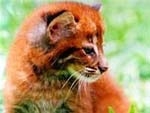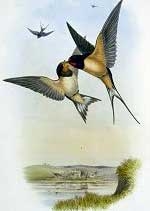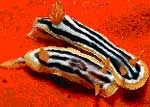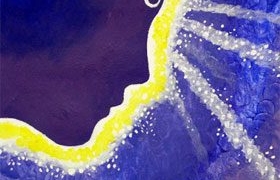On the calm surface of the lake, a strange creature suddenly appeared, resembling a multi-legged monster from legend. However, what is more concerning is that some people have begun to question whether this peculiar creature is linked to environmental pollution or nuclear radiation.
The African jacana bird (Actophilornis africanus) truly exists on our planet, and the legs they see are real (not prosthetic).
The official name, Actophilornis africanus, is a species of wading or wetland bird belonging to the Jacanidae family, found in the sub-Saharan region of Africa.
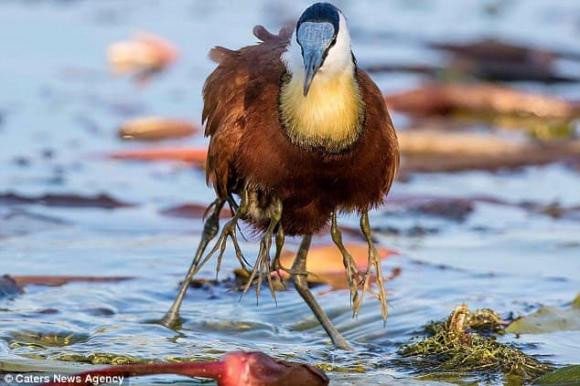
African Jacana foraging.
It is a medium-sized bird, measuring approximately 23 to 31 cm, often resembling many other common species, with females being larger than males. The male weighs only 137 grams, while the female weighs 261 grams. The jacana is commonly referred to in Thailand as the frog-mouth bird or chili bird because of its long toes and association with the queen of wetland birds. There are a total of seven species found in swamps or marshes in tropical regions around the world. The African jacana inhabits wetlands, feeding on crabs and small aquatic animals, and is typically found only on the African continent…
The uniqueness of this bird lies in the presence of dark stripes extending from the eyes, over the head, and onto the wings. The wing color is a dark brown. It has a blue bill towards the middle of the head and long gray legs. The underside of the body is also dark brown. However, before reaching maturity, they are white with dark brown stripes on the belly.
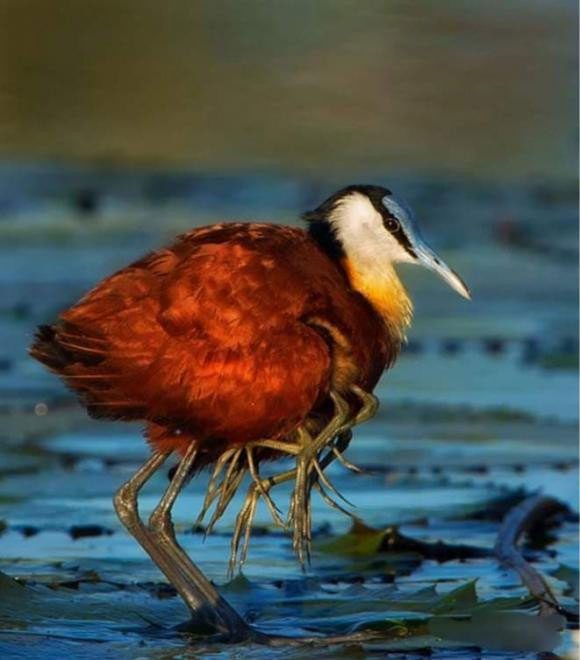
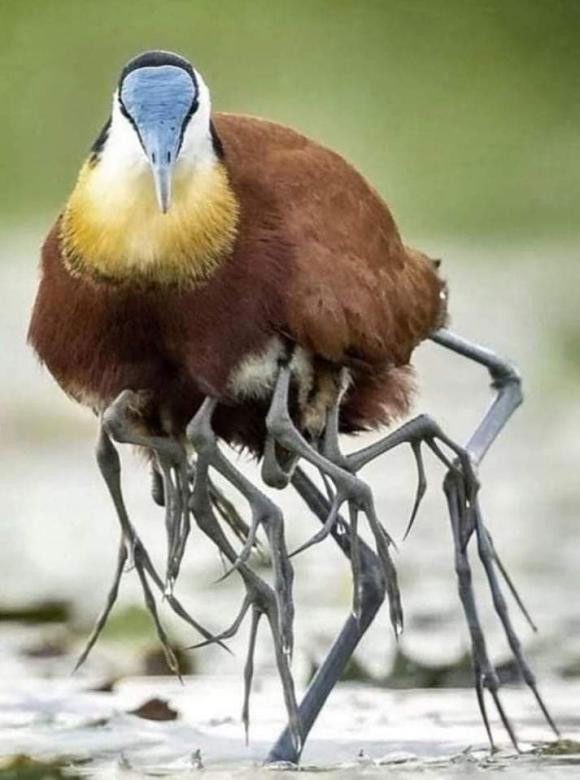
In fact, the small legs protruding down are actually the legs of their chicks.
Jacanas engage in a rather unusual mating system known as polyandry. This means that females mate with multiple males and delegate the responsibility of caring for the chicks to them. While the male protects the offspring, the female guards the territory due to her significantly larger size compared to the male.
What is considered unique is the many legs. The fact is that this bird has very slender legs and toes. The claws on each toe can extend up to 7 cm. This allows it to walk on various types of aquatic vegetation, especially in shallow ponds with floating plants or a tangle of underwater vegetation, foraging for insects or small invertebrates.

This bird has very slender legs and toes.
They also build floating nests in these areas for breeding during the breeding season. Females can mate with multiple males. They lay about four eggs in a nest, and the eggs will have one caretaker until the chicks grow up. Therefore, when foraging in such water sources, it must lead its chicks. This is also why we see it has many small additional legs, which are actually the legs of its chicks.
| African Jacana (Actophilornis africanus) is known for its rich brown and white plumage. In Australia, we have the comb jacana (Irediparra gallinacea), found in freshwater wetlands in northern and eastern Australia, particularly along the coast. Their range extends from the northeastern Kimberley in Western Australia to the Cape York Peninsula and then along the eastern coast to the Hunter region of New South Wales. Meanwhile, a species with distinctive red markings on the forehead is also found in New Guinea and Southeast Asia. Another large jacana species is the purple swamphen (Hydrophasianus chirurgus), distributed throughout the tropical regions of India, Southeast Asia, and Indonesia. |








































